Abstract
Traditional clinical psychology generally posits “mental” events that differ from “behavioral” events. Mental events are not publicly observable, take place in a different dimension from overt behavior, and are the topic of primary concern. For example, mental events are often taken to be causes of troublesome overt behavior. In addition, the mental events themselves may be regarded as troublesome, independent of their relation to any specific overt behavior. Therapy is usually aimed at fixing these troublesome mental events, under an assumption that improvement in the client's status will follow in due course. Behavior analysis has its own position on the relations among clinical matters, overt behavior, and such private events as thinking and feeling. In a behavior-analytic view, private events are behavioral phenomena rather than mental phenomena. They are not initiating causes of behavior; rather, they are themselves caused by antecedent conditions, but they may contribute to discriminative control over subsequent behavior, both verbal and nonverbal. Verbal processes are viewed as vitally important in understanding troublesome behavior. However, the circumstances that cause both the troublesome private events and the troublesome behavior in the first place still need to be addressed. Finally, clinical behavior analysis will need to market its insights into diagnosis and treatment very adroitly, because it rejects the mentalism upon which most traditional forms of therapy are predicated and the mentalism that most consumers expect to encounter.
Keywords: behavior analysis, private events, thinking, feeling, methodological behaviorism, stimulus equivalence, relational frame theory
Full text
PDF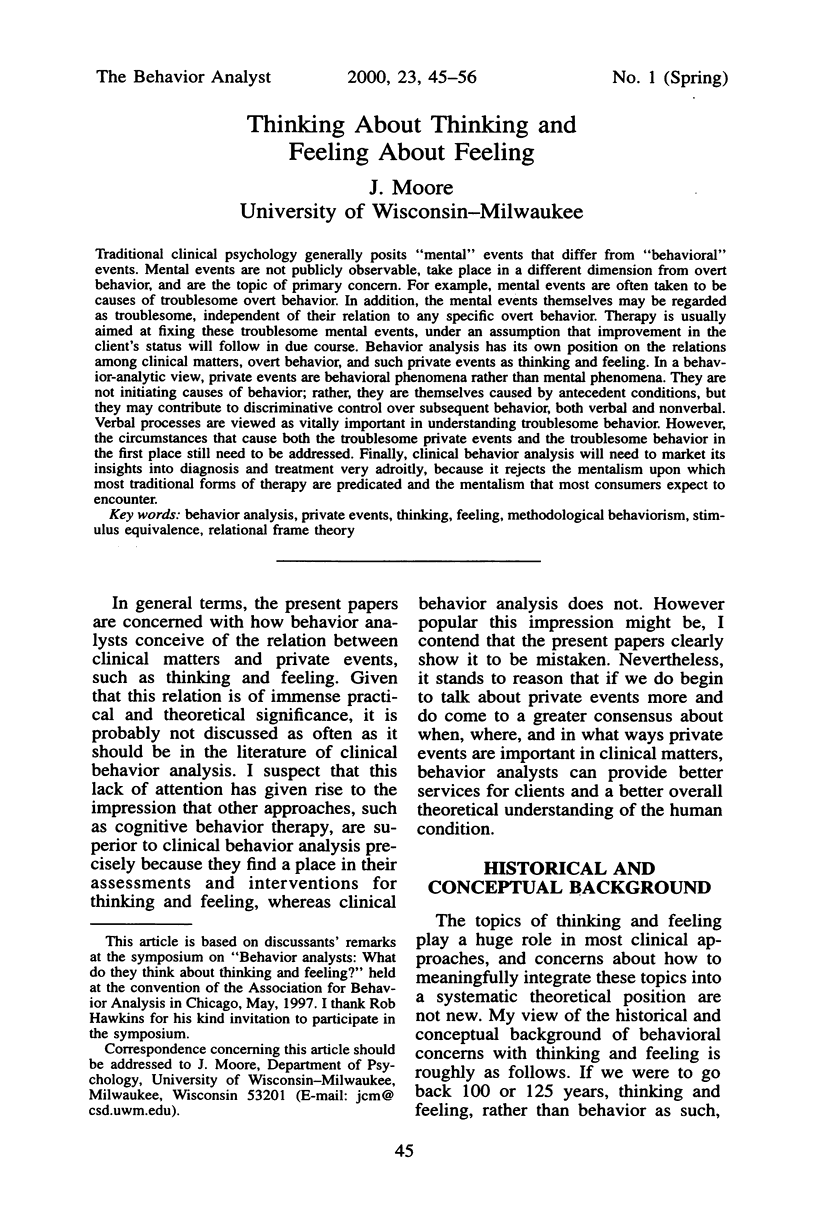
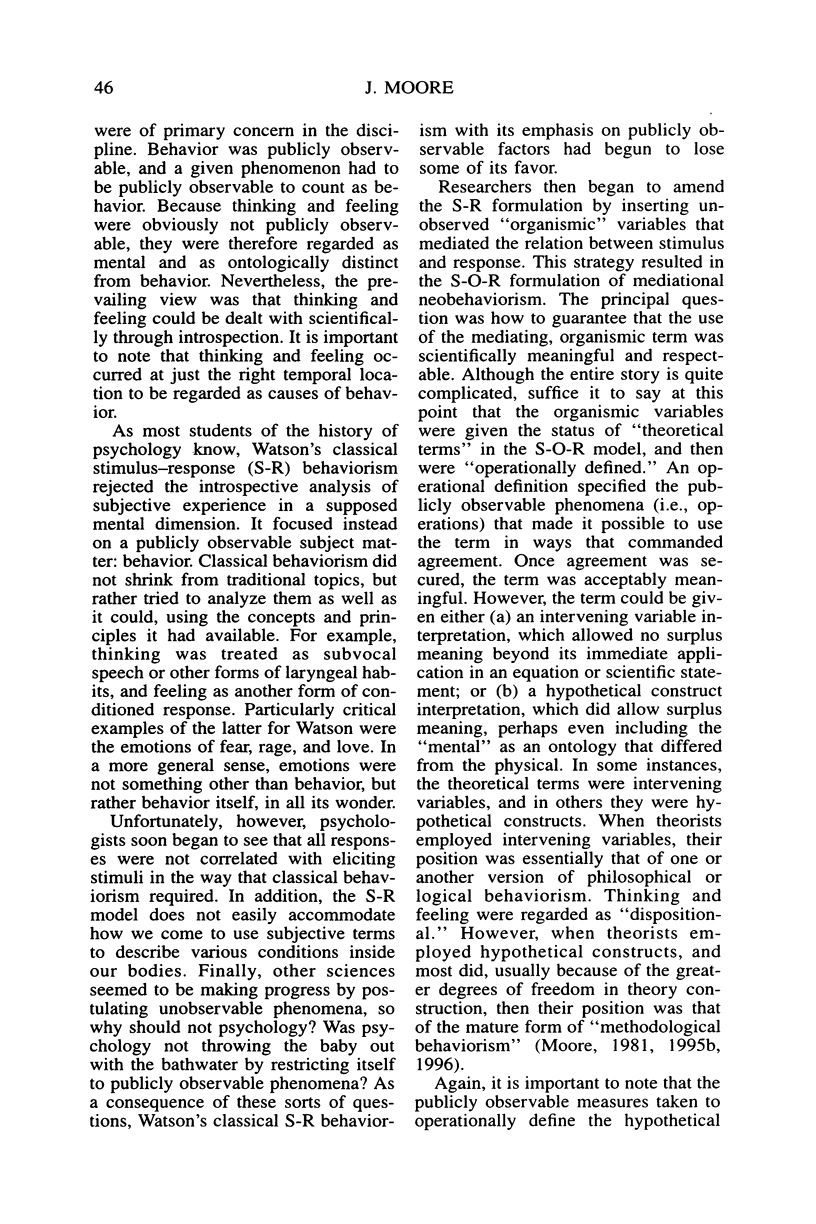
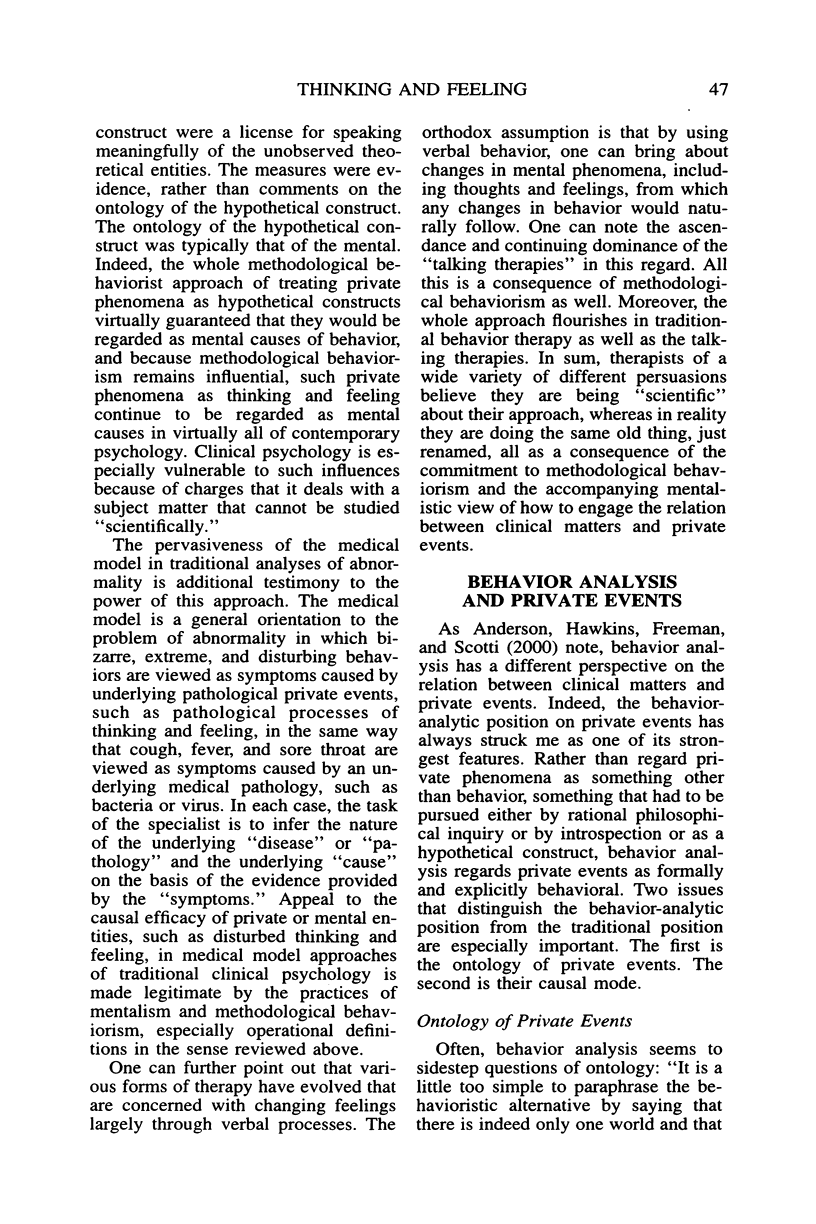
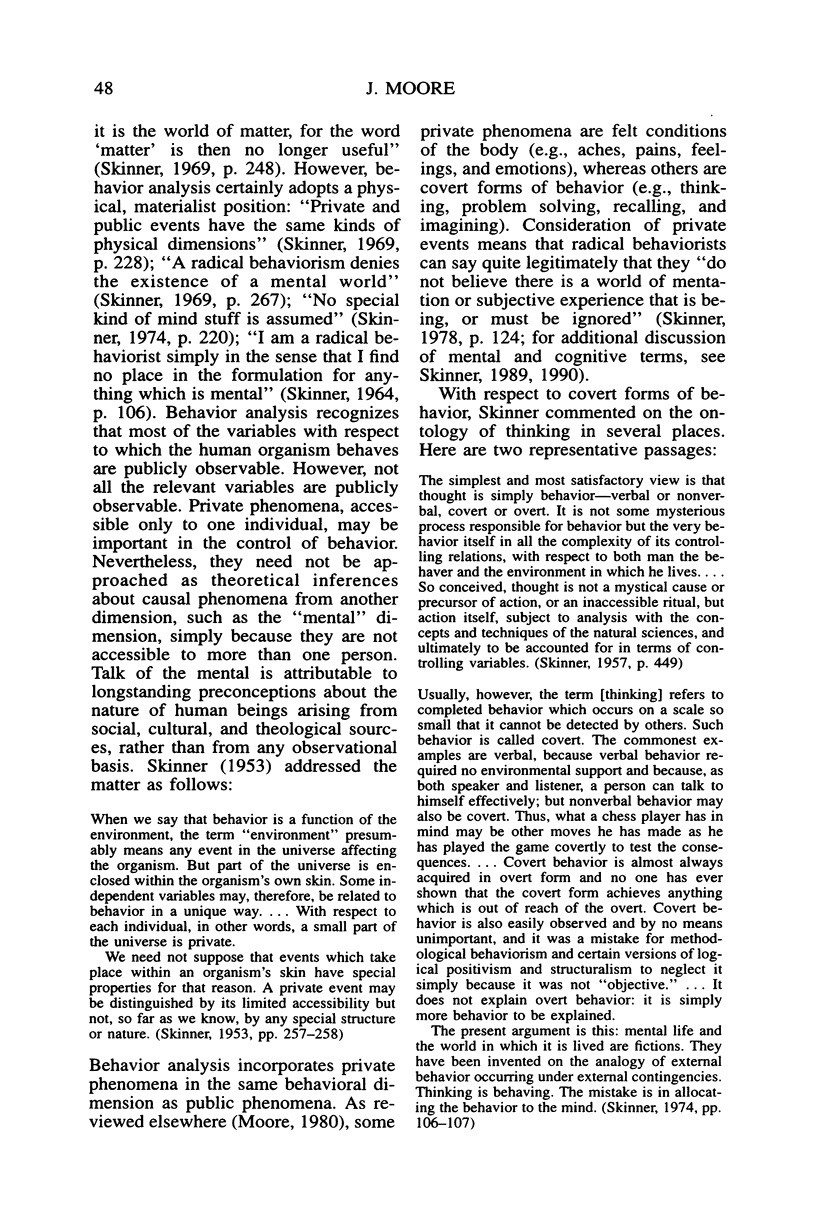
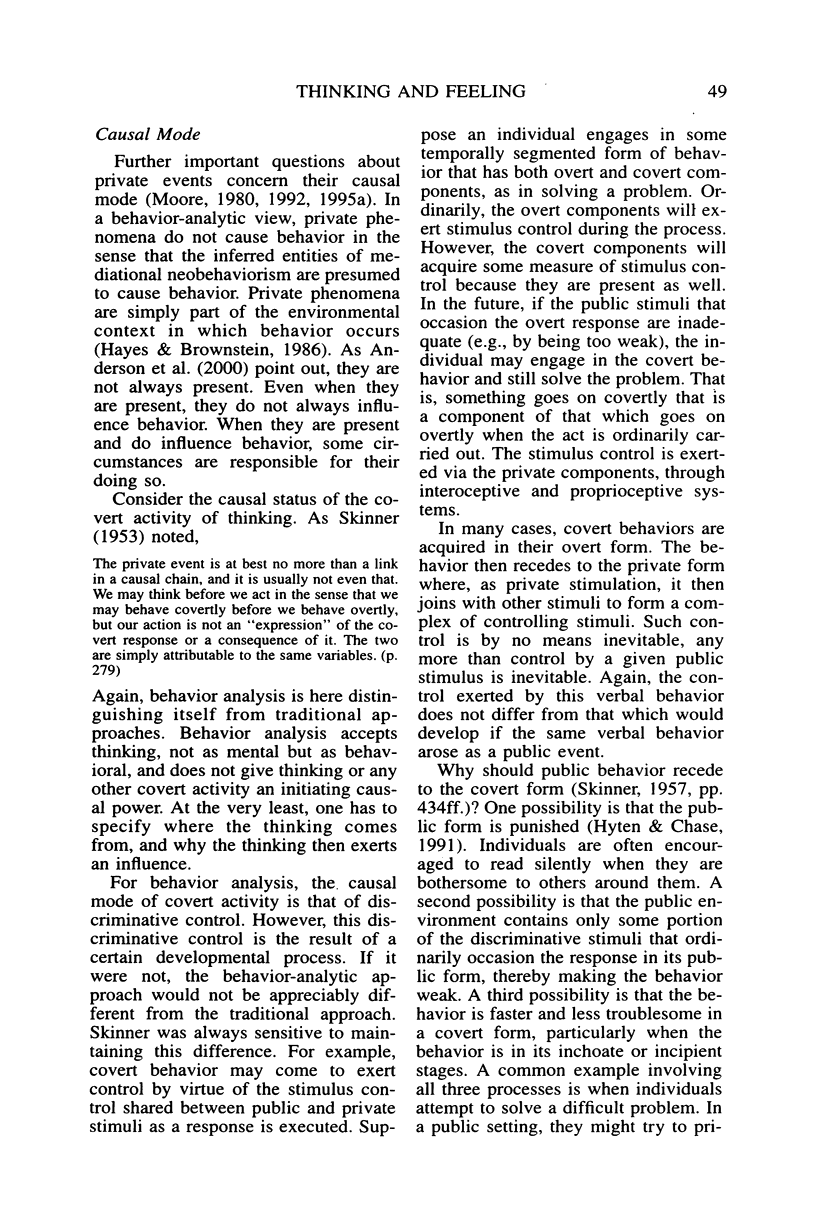
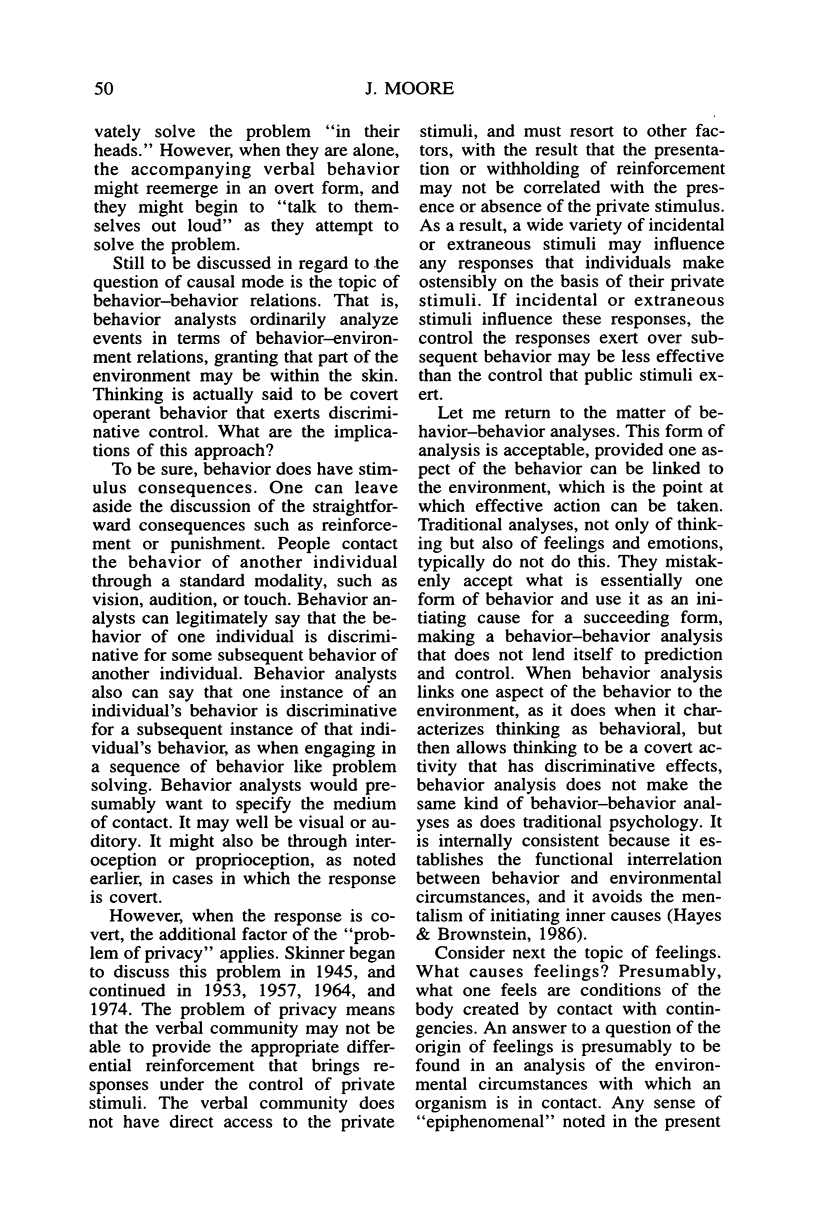
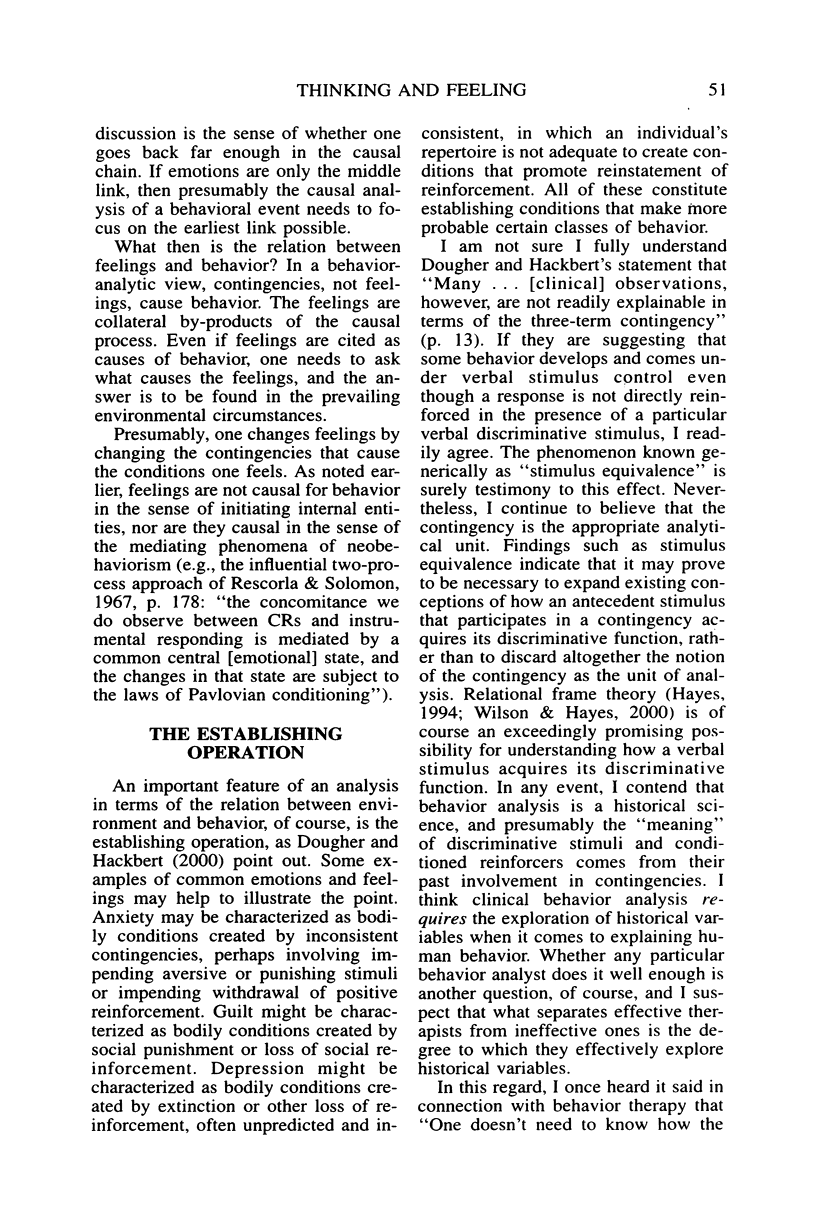
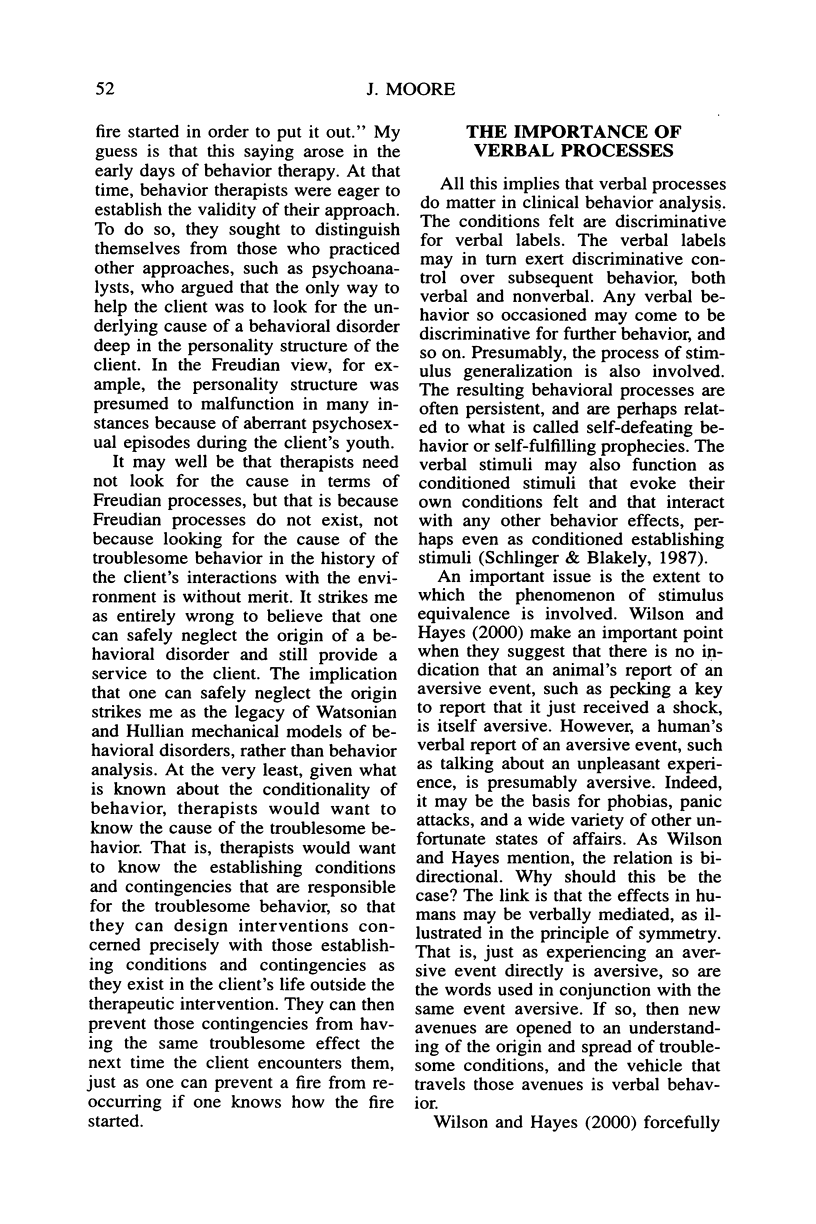
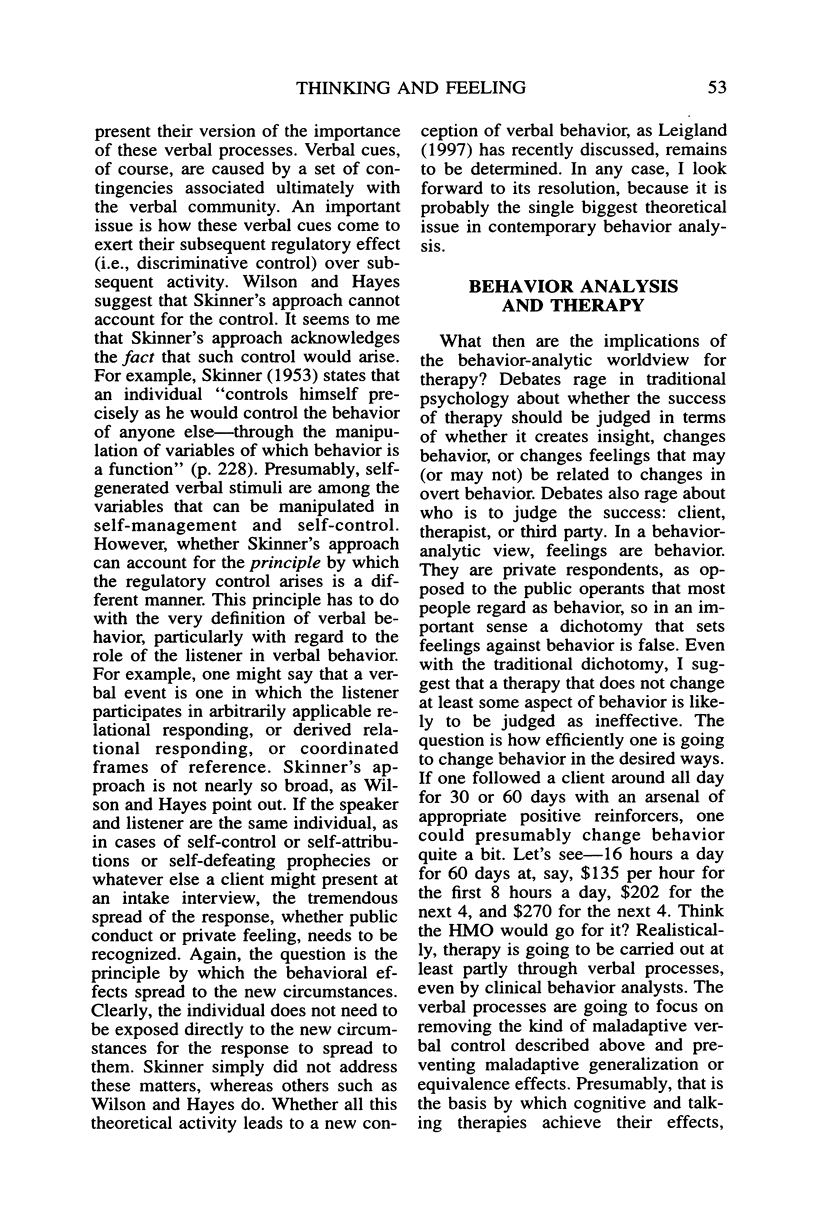
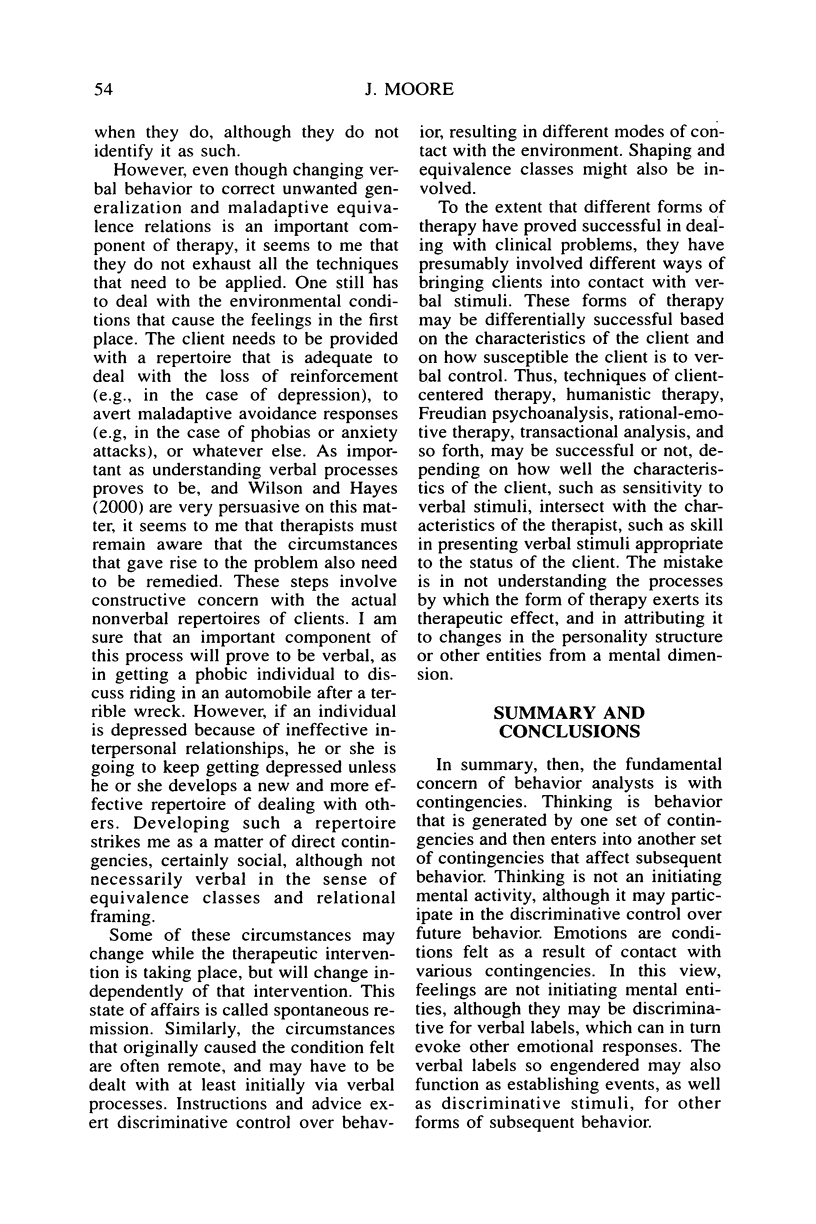
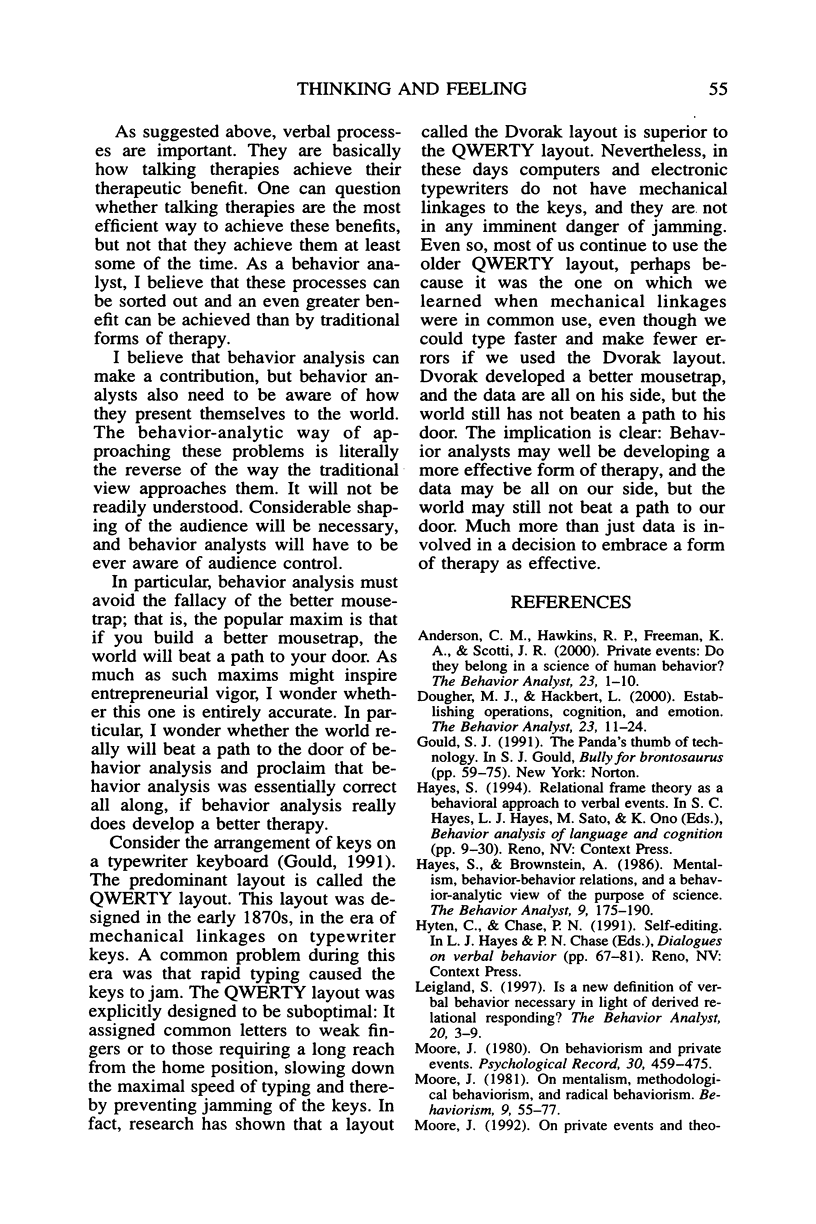
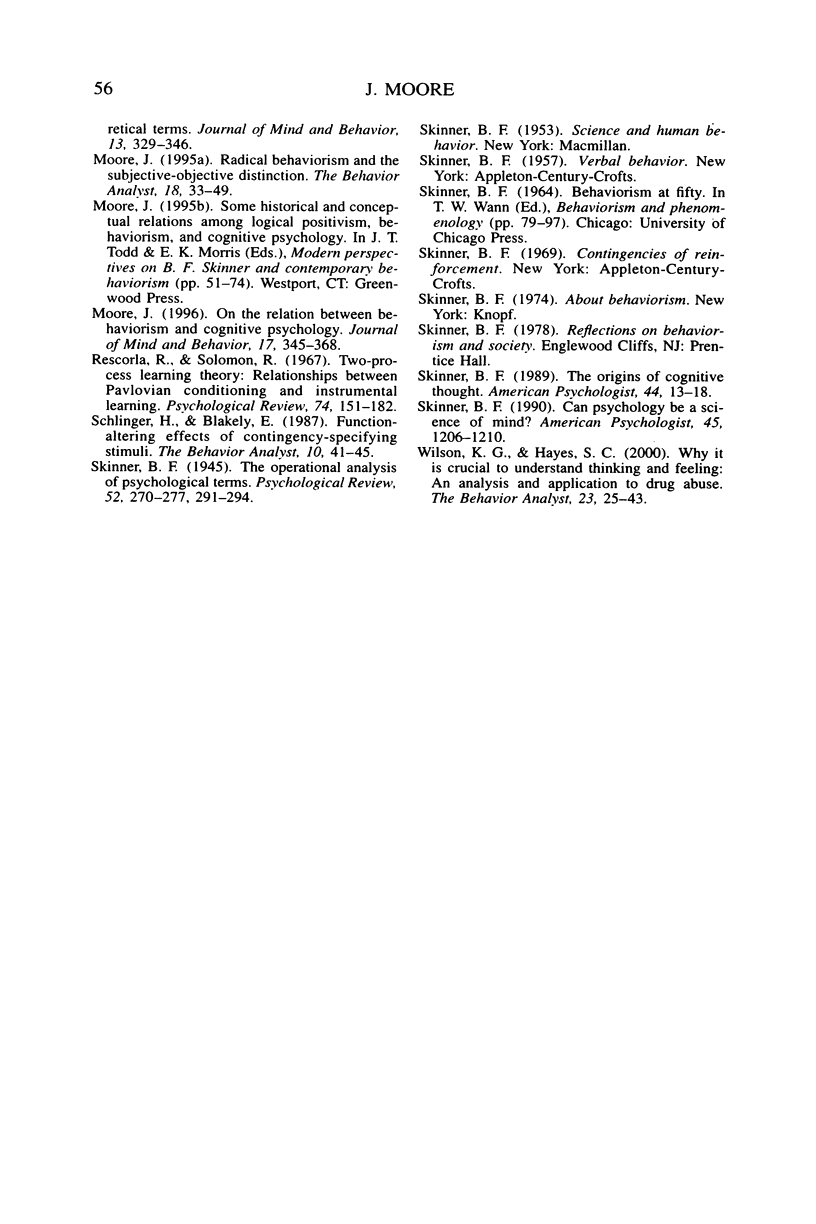
Selected References
These references are in PubMed. This may not be the complete list of references from this article.
- Anderson C. M., Hawkins R. P., Freeman K. A., Scotti J. R. Private events: Do they belong in a science of human behavior? Behav Anal. 2000 Spring;23(1):1–10. doi: 10.1007/BF03391995. [DOI] [PMC free article] [PubMed] [Google Scholar]
- Dougher M. J., Hackbert L. Establishing operations, cognition, and emotion. Behav Anal. 2000 Spring;23(1):11–24. doi: 10.1007/BF03391996. [DOI] [PMC free article] [PubMed] [Google Scholar]
- Hayes S. C., Brownstein A. J. Mentalism, behavior-behavior relations, and a behavior-analytic view of the purposes of science. Behav Anal. 1986 Fall;9(2):175–190. doi: 10.1007/BF03391944. [DOI] [PMC free article] [PubMed] [Google Scholar]
- Leigland S. Is a new definition of verbal behavior necessary in light of derived relational responding? Behav Anal. 1997 Spring;20(1):3–9. doi: 10.1007/BF03392757. [DOI] [PMC free article] [PubMed] [Google Scholar]
- Moore J. Radical behaviorism and the subjective-objective distinction. Behav Anal. 1995 Spring;18(1):33–49. doi: 10.1007/BF03392690. [DOI] [PMC free article] [PubMed] [Google Scholar]
- Rescorla R. A., Solomon R. L. Two-process learning theory: Relationships between Pavlovian conditioning and instrumental learning. Psychol Rev. 1967 May;74(3):151–182. doi: 10.1037/h0024475. [DOI] [PubMed] [Google Scholar]
- Schlinger H., Blakely E. Function-altering effects of contingency-specifying stimuli. Behav Anal. 1987 Spring;10(1):41–45. doi: 10.1007/BF03392405. [DOI] [PMC free article] [PubMed] [Google Scholar]
- Wilson K. G., Hayes S. C. Why it is crucial to understand thinking and feeling: An analysis and application to drug abuse. Behav Anal. 2000 Spring;23(1):25–43. doi: 10.1007/BF03391997. [DOI] [PMC free article] [PubMed] [Google Scholar]


